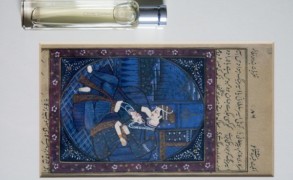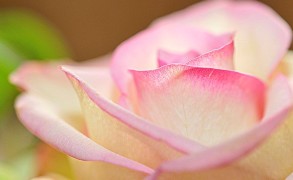When we were discussing whether the oriental fragrance family should be renamed, a few people asked a question — do we need fragrance families in the first place? Even classical terms like fougère and chypre have been edged out by the herbal and mossy descriptors, while cologne is used less for citrusy composition than for the light and refreshing style of fragrances.
Fragrance families can be confusing. For this reason, I devoted my recent episode to this topic and described how the concept originated and what it means today.
An important idea for understanding fragrance families is fragrance accords. If you haven’t already, please take a look at the video that explains what accords mean and why they are the foundation blocks of olfactive families.
Of course, the topic of fragrance families is vast, and the videos above provide only an introduction. If you would like other explanations, please let me know in the comments.
Do you use fragrance families? Do you find them helpful or confusing?













7 Comments
Cornelia Blimber: I happened to say ”fruity ” in Recommend me a perfume…but of course that’s not a description. Just an indication of the character of the fragrance. A little indication, no more, because when two people smell (or see, or hear) the same thing, they can have both a different perception.
On the other hand, such indications are helpful, at least for me. ”Leather” is for me a signal: could be not my cup of tea. Of course pyramids are to be taken with a grain of salt.
but experience has showed me that I very often like a perfume with peach in the list.
Little signpostst on the road, so to say.
A perfumer doesn’t think in classification, you teached us, that would impede the creativity.
But we passive perfumelovers, we need some definitions, some classifications. That’s inevitable if you want to speak of something.
Yes, it can be confusing. Speaking of ”lavender” as an ingredient for ”fougere” could give you the impression that Mon Guerlain is a fougere, which it is not.(imo).
But how could we speak about perfume without a vocabulary? August 13, 2021 at 11:08am
Cornelia Blimber: I see that I was confusing ”fragrance family” with pyramids and descriptions.
As to families, yes, I do to a certain extent. Some order in the chaos. But not too rigid, of course! August 13, 2021 at 12:27pm
Dorothy Van Daele: Do I use fragrance families? Are they helpful or confusing? I love this question!
Yes, I read those descriptions because they are more useful than a long, long list of ingredient names broken down into top note, heart…
Helpful, specific example: because I don’t like fougères, but I might not become aware of that element immediately. I might buy on impulse a lovely fragrance like Caldey Island lavender or Caron’s beautiful Troisieme Homme and discover that although I love the fragrance I cannot, just cannot, wear it. When I try, the fougère becomes all I’m constantly aware of in ascending and irritating intensity. I learned to use them as caution signs: some big ambers and some big florals were not for me, Samsara, Coco, Paris, come to mind, but descriptors like “big” were more important than fragrance family.
Helpful in steering me toward something I might like; mossy/woody, for example, might lead me to a delightful Comme des Garçons 2 Woman. Helpful by omission: not a chypre, not an incense, not an amber… ah, it’s Sel de Fleur, well, yes, floral, but not just a big blast of floral!
Not helpful for me is the term oriental or it’s replacement, amber. Its not intuitive to me. I need to compare what’s being described to a range of fragrances for the words to mean anything at all. Is it Moroccanoil or Mitsouko?
In practice I find that though I love citrus in isolation, its presence isn’t going to determine whether I will wear a fragrance or not. August 13, 2021 at 11:10am
Debby: I think it has become a lot less relevant in recent times as a lot of new scents don’t seem to adhere to the classic notions of perfumery.
When I was first learning what I liked and buying for myself back in the 80s, I came to know that if it was classified as oriental or chypre then I might find that to be pleasing, whereas I never got on with the floral aldehydes so much.
These days something classified as a chypre seems to bear no resemblance to what we used to know as such, and even newer families such as the gourmands are muddied as the sugary or fruity notes are in so many things that are not classified as gourmand!
Though we do need ‘something’, I feel, as it’s a confusing business these days when there is just so much (too much, even) choice. August 13, 2021 at 3:25pm
Cathy: I’m feeling similarly Debby…..I can appreciate the families and what they represent (even if they are used in a “broader” sense), but I’m finding that more and more the scent doesn’t seem to really reflect the descriptions/families as I know them. (I too started experimenting and buying my fragrances in the 80’s–I was in my 20’s). I agree that we need something, some sort of classification. August 14, 2021 at 10:37am
Marianne: Hello! I’ll start with stating that I know very little really yet have an abiding love of scent. Consequently the lists of ingredients in ‘pyramid’ form are full of interesting surprises for me, and give some guidance in investigating selected scents from an overwhelmingly vast range. In the same way as Dorothy describes so well dividing perfumes into families offers a helpful key. I live in a small city so opportunities to explore have been rather limited to regular visits to bigger places and currently that’s not possible. I think my new involvement in bios de jasmin is going to inspire me to find ways to stay connected through shared learnings. August 13, 2021 at 11:01pm
Silvermoon: I accept families might be useful for someone looking for a starting point when looking for a perfume. However, I find notes much more useful for understanding and identifying what I am smelling. I really like it when perfumes list their main notes (top, heart, base) on the packaging. L’Eau d’Italie does it really well – simple and straightforward listing of about three notes under each heading. Fredric Malle do it indirectly I.e. with lots of flowery language around it. August 20, 2021 at 2:33pm